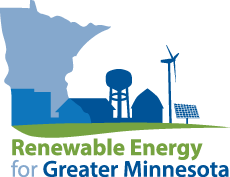This article is an excerpt from the original by Marie Wood at “The Land” magazine.
When the Fullers decided to save the barn on their farm near Trimont, MN and add on a shop, they embarked on a decade-long journey that ended with a reclaimed barn, a geothermal heating and cooling system for energy efficiency, and a solar array to power the farm with renewable energy.
Both Doug and Kris Fuller grew up on local farms. Kris grew up on a dairy farm down the road. Their acreage, which they bought around 1990, includes a farmhouse, small lake, woods, pasture and 70 tillable acres.
In May, they installed a 14 kilowatt solar array on the barn’s south-facing roof; a southern exposure is critical. The payback is estimated at seven to 10 years.
“It’s going to be able to power our whole farm,” said Maarten. “We want to make it so we’re completely sustainable.”
Fritz Ebinger, rural energy development program manager at the Clean Energy Resource Teams, conducted an on-site energy assessment on the farm in November 2015. Ebinger looked at shade readings, roof angle and structure. Ebinger noted the barn’s new steel roof, new wiring, and an electrical upgrade that had the capacity to host a solar array.
“They had a great site,” said Ebinger.
Coincidentally, they had the right amount of space for their energy needs of 14 kW, explained Ebinger. Farm operations like the Fullers usually have a 10 to 15 kW window.
“We encourage people to size to load. That’s a good electrical practice,” said Ebinger. “You want to be a good neighbor to fellow cooperative patrons.”
Ebinger works out a project estimate to include cost, tax credits, payback and depreciation.
“For us, it’s usually a business decision, a business conversation,” said Ebinger. “A lot of the focus is keeping the resources local.”
The Fuller family noted that they would not have moved forward without Fritz’s assessment findings.
Click here to read the full article by Marie Wood at The Land magazine >>



